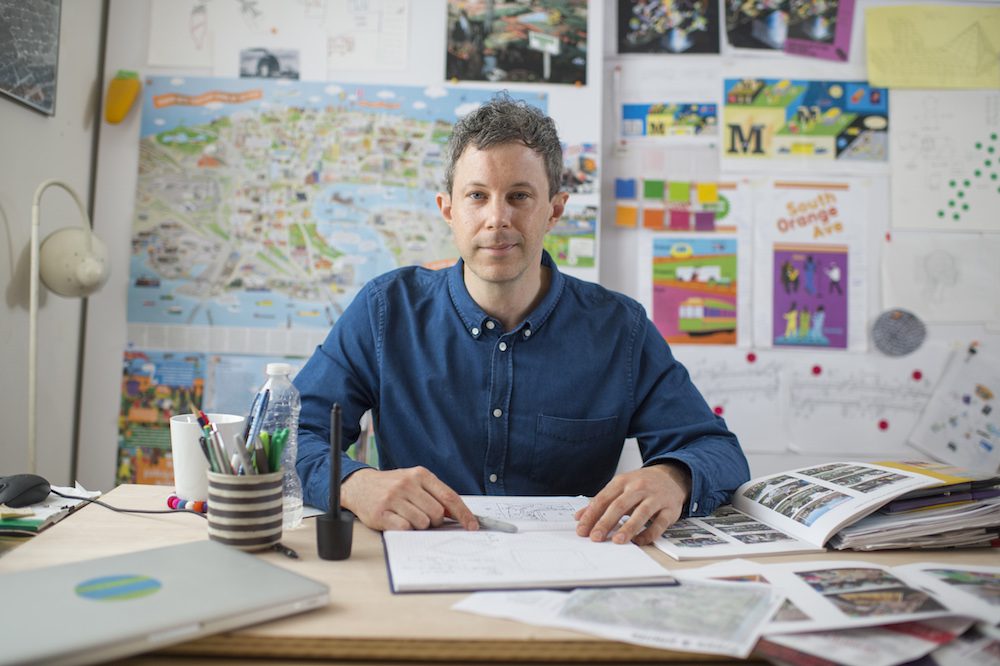
Damon Rich
In the often-contentious space where planners and community members meet, designer and urban planner Damon Rich melds formal training with personal experience to bring everyone into the conversation. Rich was named a 2017 MacArthur Foundation “Genius” award recipient, and Shelterforce spoke with him about democratizing design, neighborhood change and displacement, and having the freedom to choose collaborators.
Keli Tianga: Thank you for taking this time, and congratulations to you on the MacArthur Fellowship. We’re excited to speak with you.
Damon Rich: I feel like I’m the one who should be excited. I’ve read online and in print a lot of the material that you all have put together over the years, and I definitely feel a pretty endless debt to people who have worked under the banner of community development. It’s one of those things that was kept pretty secret from me during my supposedly very excellent education in architecture and planning. Community development was one of the places that I found answers and better questions to ask.
What are some low-tech ways that schools or local groups can get young people excited about their relationship with the built environment and infrastructure?
Damon Rich: One of the lessons learned that former interns reported back to me as having been useful in their future lives is that email is not the same thing as communication. Contrary to digital mythology, human beings have shown that certain ways of getting in touch work the best and have the most lasting effects.
In terms of getting young people excited, that was one of the things I was so lucky to be able to focus on with my work at CUP, the Center for Urban Pedagogy, which is a nonprofit that I founded and got to run for about a decade. It now thrives and is stronger and better and staffed with smarter people than ever.
[In their youth education programs] CUP continues to work mainly with public high schools on projects that begin with investigations into things that usually the students have some familiarity with, whether it’s mass transit or what food shows up in the corner store, or where public housing comes from. These investigations include interviews, site visits, documentation, a lot of the things that I learned how to do in architecture school.
The group then collaboratively designs things to communicate what they’ve learned to a larger audience. And that can include videos or posters or brochures or booklets; whatever seems like it’ll work.
Some of the abiding lessons that I learned, especially for working with high school students, although I think they apply to humans of all ages, I learned from people who have been part of the American tradition of popular education, like Septima Clark [and] Ella Baker: engaging people where they’re at, putting things as best you can in language that connects with the way people see their own interests. And as [a] great New Jersey resident, Dr. Mindy Fullilove, told me and my students, “you have to talk to people as if they’re people.”
One of the first education projects that we did at CUP like this was called Garbage Problems. In 2002, the mayor had decided to close the last municipal landfill on Staten Island. When we first met the students and started talking about infrastructure and solid waste policy, you can guess that their eyes quickly glazed over. It took half to two-thirds of a semester to convince them that we were trying to say anything different than what had been yelled at them from when they were tiny, which is that the way you become a good citizen about garbage is you don’t litter and separate your recyclables.
In a pretty tense group conversation, a student of Mexican descent was talking about his understanding of where they decided to put waste transfer stations and other garbage infrastructure. [He said,] basically, “I wouldn’t want to put it in the Jewish neighborhood where all those people would complain so much. I might put it in a Black neighborhood.” And it took some real unpacking for him to explain where he was coming from to the Black and Latino and other students in the room. These issues have been so gussied up to seem technical and scientific and the work of experts, with all the highfalutin technology of urban designers. The moment that got busted open is when, at least with these young people and many others that I’ve worked with, things became real.
And not to say that it still wasn’t a space of pretty wild, far-out imagination. There was a design competition at the time to replace the Fresh Kills landfill with a park. And the [group] decided to make their own alternative entry into this competition, which was this imaginary scenario where basically all people of color and working-class people in the city of New York have been forced to live on the landfill, not allowed to live anywhere else, and the only option of making their living [by] digging things out of the landfill. There’s a religion associated with it, and songs that they wrote.
The larger popular education goals of the project are served so amazingly well by working with the depraved imaginations of teenagers than anything that I would do with a bunch of other adults. I just consider [adults] teenagers, but now on autopilot.
There’s parts of it where it’s like, here’s the breakdown of social impacts between incinerators and landfills, [or] returning to interviews that we did, or having to chase down facts. [It’s not] just about putting young people in front of distressing situations and seeing how they react.
With the various interests that butt heads in the urban planning process, it seems like you’ve been consistently on the side of “community.” Why is supporting the community’s interests important to you?
Damon Rich: It’s nice of you to say that. I definitely feel that one of the things that I had to learn early on, [was] figuring out who of the many people claiming to stand for a community is actually worth listening to, [and] to what extent. Different from many of the people that I would salute as truly representing a community, I feel like the place that I’ve ended up being useful is in a much more intermediary role.
[CUP tries] to create structured collaborations that give people the comfort of having a lane and a clearly defined role, but don’t restrain people unnecessarily to those positions. So when it was, say, resident organizers working with graphic designers working with CUP staff, it wasn’t only the graphic designers [who] got to talk about the design. That was really, really important for us.
A lot of my early education was with the Parks Department in New York City, working in Queens with about 100 landscape architects and a small group of architects. It was a really up-close opportunity to see how people fight over shared resources.
An older park in Queens [had] four softball fields, and all the backstops for the softball fields were at the perimeter of the park, so all the outfields backed up together [in the center]. As the demographics shifted over the years and there was a bigger Latinx population in the neighborhood, some people wanted to play soccer in the joint outfields.
And lo and behold, one day the councilmen showed up at the Parks Department with a group of softball players who had a great idea to renovate the park, which was to rotate each of the softball fields 180 degrees, which was basically anti-soccer, but also by extension anti-Latinx. Those kinds of experiences showed me ways that design could really matter, where physical objects and their arrangement in space was connected to real debates with real stakes.
Trying to find ways as a designer to be a productive part of that process wasn’t even necessarily about choosing sides. Maybe in some situations you have the supposed big evil developer and the struggling but noble community, [but] I feel like those park situations were more ambiguous than that. If we want to have a democratic city, there are these things that we have to make decisions about together because it’s not someone’s private this or that.
How did the park with the ball fields work out?
Damon Rich: I think [the softball players] got their plan.
How has your work with community organizations and resident advocates changed and developed over time? What do you feel is their role in community planning?
Damon Rich: Coming to Newark, I became the first urban designer working for the city, and I was dealing with a Superfund site. My previous experience had been with New York City, where there’s an entire Department of Environmental Protection.
In Newark, I was like, “Can you point out the office of the environmental people who could understand these things and help me figure it out?” and the person said, “I thought that was you.” At the same time, many of the community-based organizations and CDCs, seeing the shortcomings of the city government, really took on a lot of the city planning in their neighborhoods. For example, the Ironbound Community Corporation, along with other groups, had been longtime advocates for environmental justice.
In the late ‘90s or so, I think they became acutely aware of the need for more planning for the neighborhood where they were based. And so they put together, with Alan Mallach and some other people, a neighborhood master plan, and then an open space plan. They were not unique. [These types of organizations] were really the ones that carried the ball, I think, for a lot of the city planning that went on in Newark.
Throughout my time working for the city and now some beyond it, I’ve been able to work on a whole bunch of projects connected to different parts of the Newark riverfront. This was something that was discussed by the city’s business elite and elected officials for about 25 years, and they had brought forth a pretty large number of planning studies and proposals that generally looked at the downtown riverfront as a great place for major real estate investment for commercial and residential.
When I inherited the four or five banker boxes of past riverfront plans, most of them came from that set of organizations and businesses and interests. The plan that had been commissioned by the Ironbound Community Corporation was really the only one that stood up for a whole other set of potential constituents. Looking at these things circa 2008, for me as a planner, a couple things seemed really clear: Despite the major resources and influence of downtown property owners and mayors and the Port Authority and all these actors, it hadn’t been enough to make even modest things happen in terms of changing this land along the river. Just the presence of that document from ICC spoke to potential coalitions that it seems had gone dismissed from the other side.
Without those organizations taking up the work of city planning, I would not have known which way was up.
Speaking of the riverfront, we recently published a piece on Atlanta’s Beltline project, and how it and other large-scale urban development projects, like the High Line, have tended to, at the very least, alienate longstanding residents, and at most hasten their displacement. What are some design measures you’ve taken to make sure that all members of a community are included in such a project?
Damon Rich: I definitely am someone who thinks that design can be part of that effort, although I don’t think it could ever be part of that effort without strong policies and laws, not to mention organizers and advocates. But in terms of design, one of the ways that we think about that here at Hector is [what] we call the “Who Put That There” test. If we’re designing something to be built, we imagine some time in the future when there’s no designers or politicians or engineers on the scene anymore, and one stranger in public just says to another, “Hey, who put that there?”, pointing at the orange Boardwalk on the Newark Riverfront, or a new Prudential headquarters. What we aspire to create is situations where the answer, and hopefully the story that gets told in response, is something that bolsters movements for accountable development, strengthens the idea that this space and this place is the way it is at least in part because people organized together and worked through politics to get what they wanted.
The riverfront is [an] example. People had been pushing for additional open space in the neighborhood, a modest public access to the river. And when all of the stars finally aligned, this was my really lucky timing to show up as a designer after those two decades of work when [it] was actually possible to think of building something. A lot of the people who had worked on those longterm efforts said, “we want a beautiful park where we can relax and picnic and see a performance and do whatever, but we don’t want people just coming down to a park and forgetting about the two decades of struggle that were necessary to make it possible.”
So we tried to respond to that pretty deep thought in a number of ways. There’s a series of art installations in the second segment of the park that pull on different threads of the site’s context and history, some of which were required by the State Historic Preservation Office, like a canal from the middle part of the 1800s, but some [were] very living memories.
For example, a lot of the energy that went toward pushing for a riverfront park came out of a successful fight against a minor league baseball stadium that had been slated to replace one of the Ironbound neighborhood’s two main parks in the early 2000s. It was a challenging, but ultimately very rewarding experience to try to draw out these living memories. [We would] draw the demonstration that got organized, or [people] gathering signatures for a referendum, and then bring those drawings to the people who lived it and have them say, “What do you mean? My hairstyle looked nothing like that in 2002.” Again, that’s just one small piece of it.
For us, having a project that has a chance of passing the “Who Put That There?” test is not just a matter of good design decisions. We believe that things mean things to people because of their understanding and the process they go through.
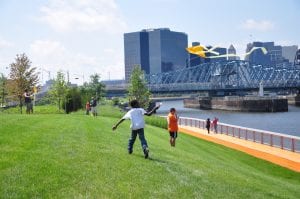
Newark Riverfront Park and Plan (2008–2015) City Of Newark, Essex County, The Trust For Public Land. Weintraub Diaz Landscape Architects and Hector urban design, planning & civic arts. Photo courtesy of Hector urban design, planning, & civic arts
In Newark, there’s an orange boardwalk. No one had necessarily asked for an orange boardwalk. That was not on the wish list. It came out of a series of decisions that started with not using tropical hardwood, and therefore using this recycled PVC plastic plank that didn’t have to be wood-colored. It’s kind of a symbol that started off with a couple different references, some inside-joke ones, like Mayor Baraka wears a lot of orange ties, or the [school] color of [Newark’s] Weequahic High School is orange. But it is also something that’s kind of open. There’s been a regular free yoga class down at the waterfront for about six years. One day, the yoga teacher called us and said, “There must be someone who does yoga on the design team, because they must have known that the chakra that’s associated with water is the color orange.”
I don’t think it works ever, no matter how awesome the design is, when it’s delivered up like the 10 Commandments to Moses on the mountain.
There is this notion that colorful, whimsical, unexpected design elements are related to gentrification, as signs or markers of it, like rehabbed buildings with a bright colored front door. Do you have any opinions on that?
Damon Rich: Yes. Designers are oftentimes focused on how things look (and indeed I would say thank goodness, because I think it is our job to care about those details in a way that other people are not paid to care about). But, just what it looks like is not ever equal to its political content, or its political import.
So, I would think of those things [as] part of that kind of exclusionary reinvestment, being designed without roots in organized communities. Here at Hector, whether it is an informational sign or the way that a development greets car drivers versus how it greets people who arrive by bus or by foot, we’re always trying to find ways that a design can really take root in groups of people that have come together to articulate an agenda for what they want to see happen.
For me as a designer who does take great joy in colors and textures and all of the physical and sensual details that are available for making places, it [is] a sad thing that many people understand the work of design as exclusively an agent of exclusionary reinvestment. I certainly hope that in some small way, the work that I get to do with young people, with community organizations, is something that shows that these tools, whether they be eye-catching or alluring, are not solely on the side of forces that people are trying to fight against.
So, do you have any ideas about what you are going to do with the fellowship award? “Information-gathering” trip around the world?
Damon Rich: Yes, right, build up my record collection.
I think, luckily for all of us, the award, which is such outrageous generosity, is parceled out over five years.
So you can’t go too crazy.
Damon Rich: You can’t go too crazy all at once. It definitely is a lot to think about. Here at Hector, both my partner [Jae Shin] and I have most immediately come out of working in the public sector. I was with the City of Newark, and she was most recently working with the New York City Housing Authority. I think [one thing] we both found really valuable about working in the public sector is that it gave you a view of the overall field. You saw who was working with and for each other, and who was working against each other. And at really lucky moments, it opened up opportunities to create new kinds of clients and new kinds of coalitions. Now that we’re an independent firm, structuring and sustaining those kinds of collaborations [is] a lot more challenging.
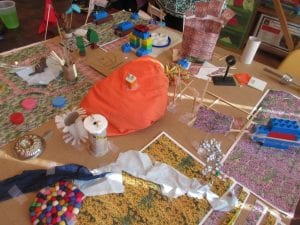
Mifflin Square Park Design and Neighborhood Plan, 2016–present. Photo courtesy of Hector urban design, planning & civic arts
We’re working right now with a coalition of community groups in Southeast Philadelphia who are looking to rebuild a 100-year-old neighborhood park while facing imminent gentrification and trying to support their shopping street. And there, even though their remit was pretty clear, like we need a park plan, we need a park design and a housing and commercial corridor plan, we were able to partner with the very successful arts organization, [the] Philadelphia Mural Arts Restored Spaces Initiative, before any of that work started, to collaborate with a group of young people in their summer youth employment program to work on behalf of the coalition to try to investigate how parks get designed in Philadelphia, who makes the rules, how the money flows, etc., to try to help activate their constituency as they went forward with this planning and design project.
All that is to say is that one of the things that we’re definitely grateful for is that the [MacArthur] Foundation support will allow us to try different things in terms of how we structure those kinds of partnerships. It makes us less financially constrained in terms of the kinds of clients and collaborative relationships that we try to put together.
Something else, and this is something that Shelterforce is a huge inspiration on, is I definitely hear more discussion from younger people in their 20s [and] 30s with curiosity around issues of community development and the politics of real estate. I just had a phone call this week with the organizers of the Allied Media Conference in Detroit that brings together thousands of young people working on various political fronts. I got to be on a panel [there] about gentrification politics and disinvestment and reinvestment. And now, for the first time, they want to organize an entire track as part of their conference on focusing on these kinds of issues.
I really do hope that I can play some part in making [the award] a recognition of the broad community of people doing this work, whether it’s the Association for Community Design on the design side, or groups like National CAPACD working with CDCs and other community organizations across the country. I hope that, from my position and slight expertise as a designer and a planner that I can help get that work as much out into the world as possible.
Thank You

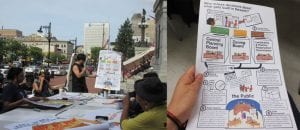

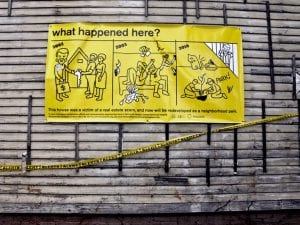

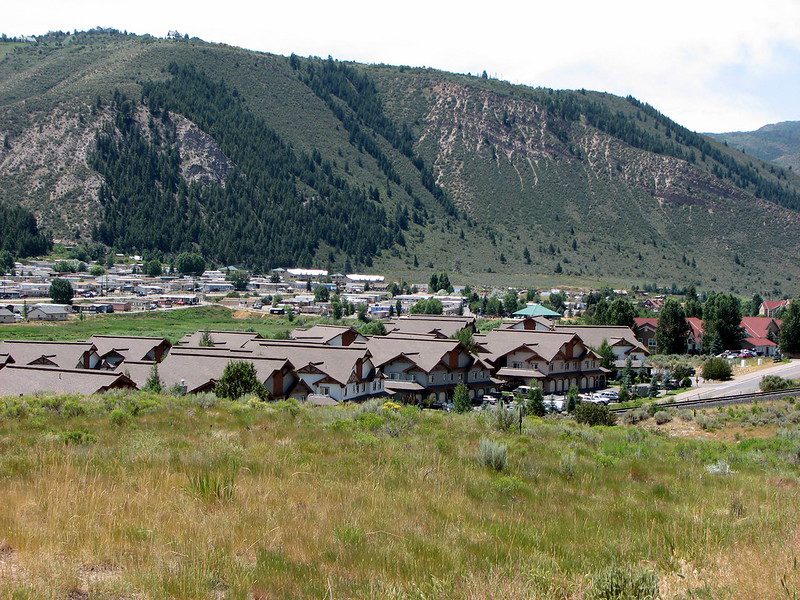
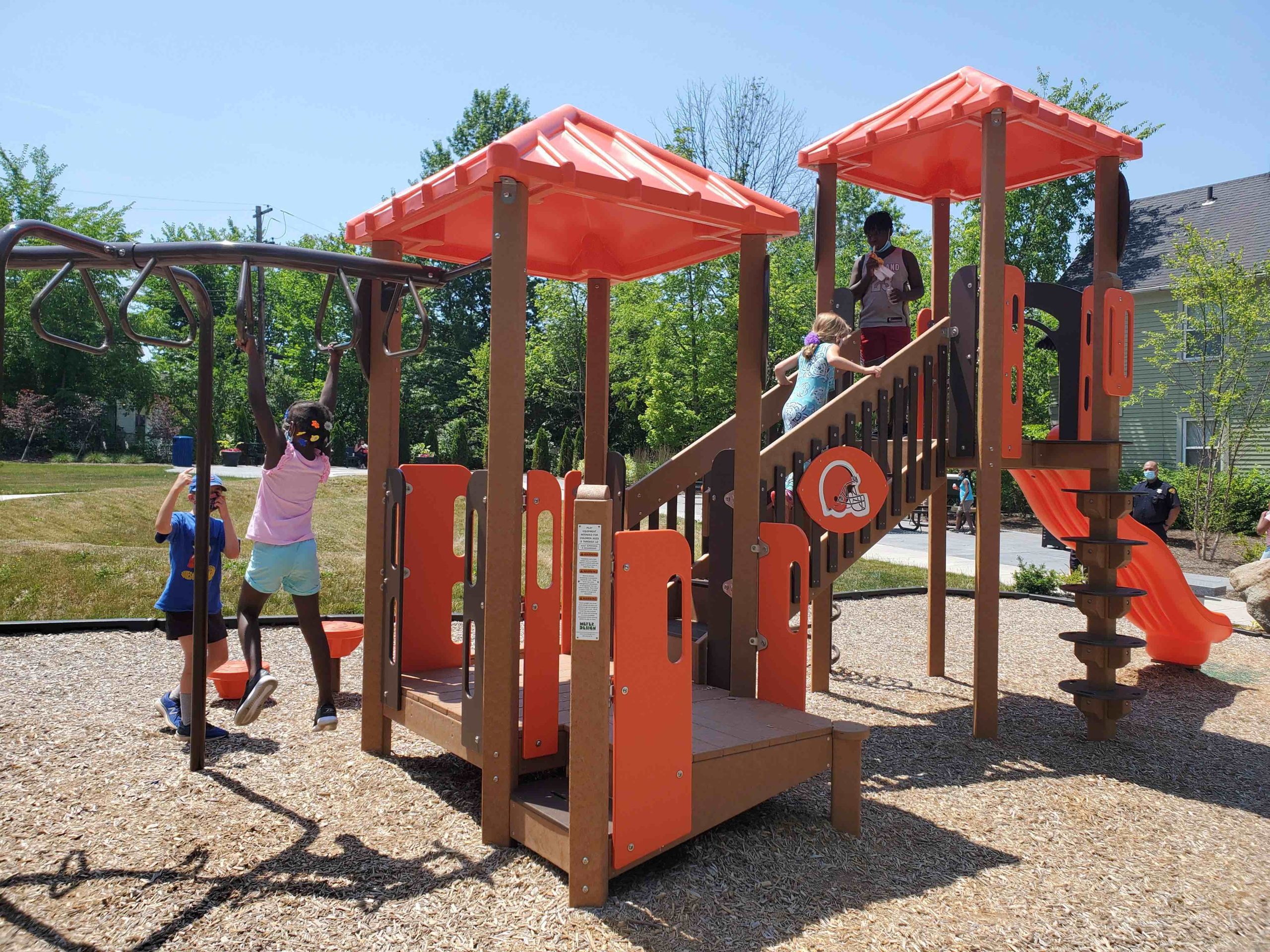
Comments